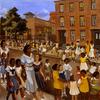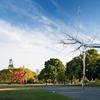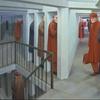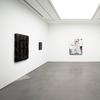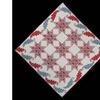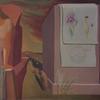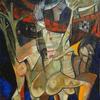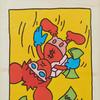With Pleasure: Pattern and Decoration in American Art 1972–1985 at MOCA LA
- LOS ANGELES, California
- /
- September 25, 2019
This fall, The Museum of Contemporary Art (MOCA) in Los Angeles presents With Pleasure: Pattern and Decoration in American Art 1972–1985, the first full-scale scholarly North American survey of the groundbreaking yet understudied Pattern and Decoration art movement. Including painting, sculpture, collage, ceramics, textiles, installation art, and performance documentation, the exhibition spans the years 1972 to 1985 and features forty-five artists from across the United States. With Pleasure examines the Pattern and Decoration movement’s defiant embrace of forms traditionally coded as feminine, domestic, ornamental, or craft-based and thought to be categorically inferior to fine art.
This expansive exhibition traces the movement’s broad reach in postwar American art by including artists widely regarded as comprising the core of the movement, such as Valerie Jaudon, Joyce Kozloff, Robert Kushner, Kim MacConnel, and Miriam Schapiro; artists whose contributions to Pattern and Decoration have been underrecognized, such as Merion Estes, Dee Shapiro, Kendall Shaw, and Takako Yamaguchi; as well as artists who are not normally considered in the context of Pattern and Decoration, such as Emma Amos, Billy Al Bengston, Al Loving, and Betty Woodman.
Organized by MOCA Curator Anna Katz, with Assistant Curator Rebecca Lowery, the exhibition will be on view at MOCA Grand Avenue from October 27, 2019 to May 11, 2020. It is accompanied by a fully illustrated, scholarly catalogue published in association with Yale University Press.
Often described as the first contemporary art movement comprised of majority female artists, Pattern and Decoration—or P&D, as it is commonly known—defied the dominance of modernist art by embracing the much-maligned category of the decorative. P&D artists gleaned motifs, color schemes, and materials from the decorative arts, freely appropriating floral, arabesque, and patchwork patterns and arranging them in intricate, almost dizzying, and sometimes purposefully gaudy designs. Their work across mediums pointedly evokes a pluralistic array of sources from Islamic architectural ornamentation to American quilts, wallpaper design, Persian carpets, and Japanese Imari ware ceramics.
Pattern and Decoration’s maximalist, eclectic citation of all things ornamental flew in the face of the reductive, cool aesthetics of minimalism, modernist ambitions to purity and self-reflexivity, and conceptual art’s demotion of the handmade. Most importantly, it was intended as a recuperation of forms and techniques historically discredited on the basis of their “femininity” and their status as craft. Shaped and driven in large part by feminism and the development of feminist art historical methods that demystified the logic and rhetoric of value assignation, Pattern and Decoration artists understood modernism as a puritanical art of exclusion—of progressively stripping away or excluding forms and materials deemed extraneous—and sought to create an art based on both aesthetic and political principles of inclusion.
P&D artists practiced a postmodernist art of appropriation born of love for its sources rather than the cynical detachment that became de rigueur in the international art world of the 1980s. Though little studied today, the Pattern and Decoration movement was institutionally recognized, critically received, and commercially successful from the mid1970s to the mid-1980s. The overwhelming preponderance of craft-based practices and unabashedly decorative sensibilities in art of the present-day point to an influential legacy that is ripe for consideration.

